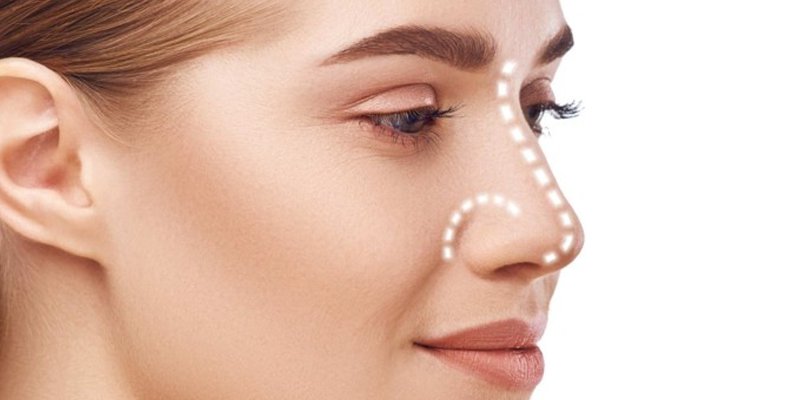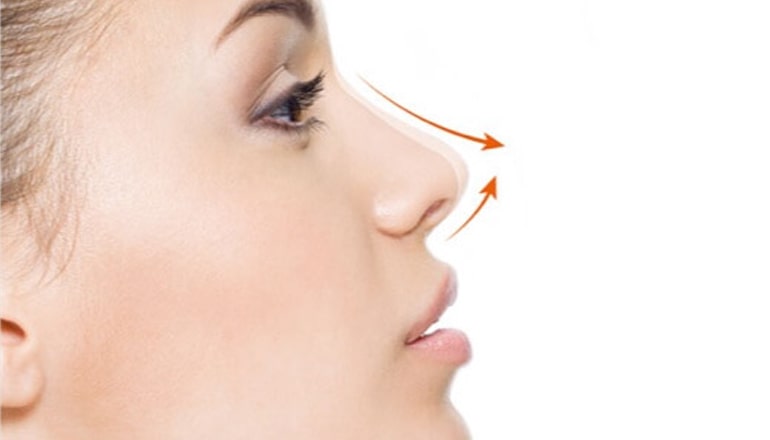Deciding to undergo rhinoplasty is a significant step that requires careful consideration and thorough preparation. As you embark on this journey toward enhancing your facial symmetry and personal confidence, understanding the intricacies of the procedure is vital. One of the most effective ways to ensure you and your surgeon are aligned is by asking the right questions.
This blog post will guide you through the essential inquiries you should make regarding your surgeon’s qualifications, the surgical techniques employed, recovery expectations, and the financial aspects of the procedure. Being well-informed will not only ease your concerns but will also empower you to make educated decisions about your rhinoplasty experience.
Contents;
Understand The Surgeon’s Qualifications And Experience

When considering rhinoplasty, it is essential to delve into the qualifications and experience of the surgeon who will be performing the procedure, as their expertise will significantly impact both the outcome of the surgery and your overall safety during the operation. A well-qualified surgeon should typically possess board certification in plastic surgery or otolaryngology, providing a solid foundation of knowledge and skills related to facial procedures, including rhinoplasty. Furthermore, experience specific to rhinoplasty is paramount, as the complexities of reshaping the nose require a detailed understanding of both the functional and aesthetic aspects involved in this delicate procedure. To assist you in your assessment of a surgeon’s qualifications, consider asking the following questions:
- What board certifications do you hold?
- How many rhinoplasty procedures have you performed?
- What is your complication rate for rhinoplasty surgeries?
- Do you have specialized training in facial surgery?
- Can you provide references from past patients?
After gathering this crucial information, take the time to reflect on the surgeon’s education and training, as these details can provide insight into their capability and commitment to excellence in their field. In particular, look for additional fellowships or advanced training in facial cosmetic surgery, which may enhance their technical skills and artistic eye when it comes to the nuances of rhinoplasty. Moreover, a surgeon with extensive experience may be more adept at managing complications should they arise, ensuring a smoother experience throughout your journey before rhinoplasty.
Additionally, you may want to investigate the surgeon’s before and after portfolio to gauge their aesthetic sensibility and the consistency of their results, as this can further inform your expectations and provide reassurance regarding their capability.
When examining their portfolio, focus on cases that resemble your own nasal structure, as well as the goals you wish to achieve through the procedure. Finally, it is vital that the surgeon is open to discussing their qualifications and experience, as transparent communication is a hallmark of a trusted and reputable medical professional in the field of cosmetic surgery. Ultimately, investing the time to thoroughly understand your surgeon’s qualifications and experience can empower you to make informed decisions about your rhinoplasty journey.
Discuss The Surgical Techniques And Approach Used
When contemplating rhinoplasty, it is crucial to fully understand the various surgical techniques and approaches that may be utilized by your surgeon, as each method carries unique implications for both the surgical process as well as the eventual aesthetic outcomes.
Therefore, asking your surgeon to clarify which specific technique they plan to use not only provides insight into their surgical style but also allows you to comprehend the rationale behind their choice, which is imperative for establishing trust and ensuring that your expectations align with reality. In addition, you may find it beneficial to inquire about the type of anesthesia that will be administered during the procedure, as this can significantly influence your overall experience and comfort levels while in the operating room.
While there are numerous approaches to rhinoplasty, two of the most commonly used techniques include open rhinoplasty and closed rhinoplasty; each has its distinct advantages and considerations that can greatly affect the outcome of the surgery. Open rhinoplasty involves making a small incision on the underside of the nose, which allows for greater visibility and access to the nasal structures, enabling the surgeon to make more precise alterations, while closed rhinoplasty, on the other hand, utilizes incisions made entirely within the nostrils, which may result in reduced scarring but limits access to internal nasal structures.
Therefore, being informed about these methods not only aids in gauging the surgeon’s proficiency but also empowers you as a patient to make well-informed decisions regarding your personal preferences for your rhinoplasty. Furthermore, when discussing surgical techniques, it’s important to approach the conversation with specific questions in mind, such as:
- What technique do you recommend for my particular nasal structure and desired outcome?
- How many rhinoplasty procedures have you performed using this particular approach?
- What changes can I realistically expect to see with this technique?
- How do you ensure precision and safety during the procedure?
- Are there alternative techniques that might yield better results in my case?
Asking these questions allows you to gain deep insights that can prepare you for your upcoming surgery and help you establish confidence in your surgeon’s expertise. Ultimately, understanding the techniques employed in rhinoplasty is an integral part of the surgical journey, as it not only ensures that you are well-informed but also allows you to actively participate in your care and recovery process. Always feel empowered to voice any concerns or curiosities you may have before rhinoplasty, as an open dialog with your surgeon is fundamental to achieving the aesthetic results you desire.
Clarify The Risks And Potential Complications Involved

When you are considering undergoing rhinoplasty, it is imperative that you take the time to carefully discuss and clarify the various risks and potential complications associated with the procedure, ensuring that you have a thorough understanding of what could transpire, so as to make an informed decision that aligns with your personal comfort levels and health objectives. It is also essential to engage in a comprehensive dialogue with your surgeon regarding the likelihood of specific complications, as this will provide you with a clearer perspective on the overall safety of the procedure tailored to your unique anatomical features and medical history.
Being well-informed about the possible negative outcomes attached to rhinoplasty not only empowers you as a patient but can significantly enhance your preparedness throughout the entire surgical process, including recovery.
Common Risks Associated with Rhinoplasty
As with any surgical procedure, rhinoplasty is not without its inherent risks, which may include excessive bleeding, infection, or adverse reactions to anesthesia, all of which could potentially complicate the recovery timeline and overall outcome of the surgery; therefore, it is crucial to discuss these concerns with your surgeon to gauge their likelihood based on your specific circumstances.
Moreover, the potential for scarring is another factor to consider, as even in skilled hands, the incisions made during rhinoplasty can result in varying degrees of visible scarring, which some patients may find unacceptable, depending on their personal aesthetic goals. Additionally, there might be functional complications such as difficulty breathing if the surgery alters the structure of the nasal passages in a way that could impede airflow, thus underscoring the importance of choosing a qualified professional with extensive experience in this field.
Long-Term Complications to Consider
Beyond immediate risks, it is vital to also be aware of the long-term complications that can arise post-surgery, such as the potential for asymmetry in the nasal structure or undesirable aesthetic results that may require revision surgery to correct, which can have significant emotional and financial implications for the patient. Furthermore, the possibility of experiencing a condition known as saddle nose, which may occur if there is a degradation of nasal support structures, is something that should not be taken lightly, as it can severely affect both appearance and function, leading to prolonged dissatisfaction with the surgical outcome.
Being fully educated about these risks, and understanding that while many patients achieve successful results, some may encounter issues that necessitate additional intervention will ensure that you are not only prepared for the surgery itself but also for any potential follow-up care that might be required if complications arise during the healing process.
Inquire About The Expected Recovery Timeline And Process
When considering undergoing rhinoplasty, it is essential to pose questions regarding the expected recovery timeline and process, as understanding this aspect can significantly impact your overall experience, helping you to prepare both physically and mentally for the post-operative journey that lies ahead.
During your consultation with the surgeon, you should seek detailed explanations about what the recovery will entail, including when you can expect to return to work, engage in physical activities, and see the final results of your procedure, since everyone heals at their own rate, but having a general idea can help manage expectations and reduce anxiety. As you inquire about the recovery timeline, don’t forget to ask the surgeon about any specific instructions that will need to be followed during this period, such as restrictions on movement or special care for the treated area.
The recovery process from rhinoplasty typically involves several stages, and acknowledging these stages is crucial for a successful recuperation, so you might find it enlightening to understand that immediate swelling and bruising often occur post-surgery, with initial healing generally taking a few weeks, but the more subtle changes may take longer to emerge. By asking the surgeon for a timeline detailing when you can expect visible improvements and when the swelling might subside, you can gain a clearer understanding of the healing process and the important milestones along the way.
Additionally, considering whether any follow-up appointments will be necessary during the recovery period is advisable, as these sessions can offer an opportunity for the surgeon to monitor your progress and address any concerns that may arise. In order to facilitate a smoother discussion regarding your recovery, consider bringing the following questions to your appointment:
- What is the typical recovery timeline for your rhinoplasty patients?
- When are most patients able to return to work after the surgery?
- What specific care and precautions do you recommend during the recovery phase?
- How will swelling progress, and when can I expect to see my final results?
- Are there any signs of complications I should be on alert for while recovering?
By seeking transparency on these aspects of the recovery process, you will equip yourself with knowledge and awareness that can help reassure you as you embark on your rhinoplasty journey, allowing you to be proactive about your healing and to set realistic expectations for your recovery timeline. Ultimately, knowing what to anticipate during the recovery period, including pain management, activity restrictions, and post-operative check-ups, will ensure that you feel more prepared and confident, guiding you to a smoother transition back to your daily routine following the surgery.
Explore The Costs And Insurance Coverage Options Available

When considering rhinoplasty, one of the most important aspects that you need to focus on relates to the overall costs associated with the procedure, as these costs can vary widely depending on a myriad of factors, including the surgeon’s experience, the geographical location of the practice, and the specific nature of the surgical technique employed, which leads to the necessity of asking pointed questions about the expected financial commitment before undergoing the operation.
Understanding these costs is essential not only for your financial planning but also for ensuring that you make well-informed choices, as the upfront consultation with the surgeon can often reveal not just the price tag associated with the surgery itself but also a clearer picture of any additional fees that may arise, such as anesthesia or facility costs. Moreover, it’s crucial to inquire about the potential for insurance coverage when contemplating rhinoplasty, as this procedure may sometimes be considered medically necessary, particularly in cases where breathing issues or other health-related outcomes are part of the discussion, thereby potentially opening up avenues for financial relief through your health insurance policy.
Sometimes, insurance may cover a portion of the costs if the surgery is deemed medically necessary, says a qualified surgeon, emphasizing the significance of providing thorough documentation to support your case. Here are some aspects to discuss regarding costs and insurance:
- Ask about the total estimated cost of the rhinoplasty procedure, including consultation fees and potential post-operative expenses.
- Inquire whether the surgeon is in-network for your insurance, as this can significantly impact your out-of-pocket expenses.
- Find out about payment plans or financing options that may be available if the costs exceed your budget.
With this information in hand, you can better navigate the financial landscape of your rhinoplasty journey, ensuring that there are no hidden surprises along the way as you move closer to achieving your aesthetic and functional goals. Ultimately, being proactive in your discussions about costs and insurance can provide peace of mind, allowing you to focus on what truly matters: your health and the outcomes of your surgery. Before rhinoplasty, gathering all pertinent details regarding expenses not only prepares you financially but also empowers you to make the best decisions for your personal situation, understanding that transparency in this area is essential for a successful surgical experience.
Evaluate The Surgeon’s Before And After Portfolio Samples
The importance of assessing the surgeon’s before and after portfolio samples cannot be overstated, as these visual testimonials serve as a compelling indicator of the surgeon’s artistic skill and technical proficiency in rhinoplasty, allowing prospective patients to gauge the potential outcomes of their own procedures while making informed decisions about the surgeon they choose. By meticulously examining these samples, individuals can identify whether the results align with their aesthetic goals and expectations, as well as understand the range of techniques employed by the surgeon to achieve desirable results in previous cases.
Moreover, it is essential to consider the level of consistency displayed in the portfolio; a diverse array of successfully performed procedures can assure patients of the surgeon’s ability to adapt to various facial structures and personal preferences. It is advisable to look for cases that closely resemble your own anatomy, since this familiarity with specific nasal characteristics and challenges could significantly influence the overall outcome of your rhinoplasty.
- Ask the surgeon for a comprehensive selection of before and after photos.
- Pay close attention to the diversity of cases, including different nose shapes and sizes.
- Inquire about any challenges in specific cases and how they were addressed.
- Look for consistency in results across various individuals and procedures.
- Consider requesting references from past patients to gain further insight.
Furthermore, while it is vital to appreciate the surgical outcomes depicted in the portfolio, one should also remain cautious and avoid being overly swayed by edited or filtered images, as these may not accurately represent the true results of the rhinoplasty. Engaging in honest discussions with your surgeon regarding the expectations set forth by their portfolio can clarify any potential discrepancies and become instrumental in aligning your vision for your own transformation. Ultimately, a thorough evaluation of the surgeon’s portfolio acts as a critical component in your decision-making process, ensuring that the focus remains on achieving outstanding, natural-looking results with rhinoplasty.

Thank you for this detailed post! I think asking about the surgeon’s experience is crucial, but I’m curious if there are any questions that would help gauge their artistic sensibility? I feel like the technical skills are important, but the aesthetic results matter just as much, right?